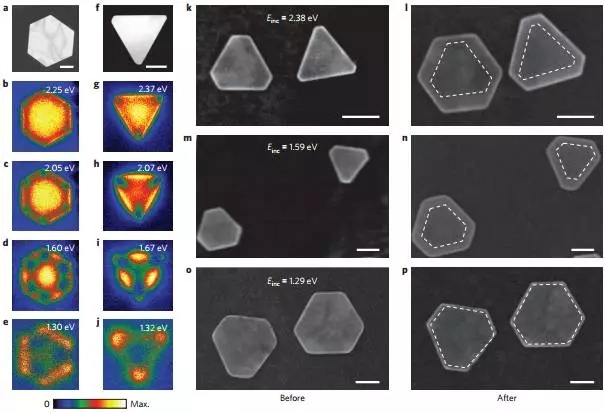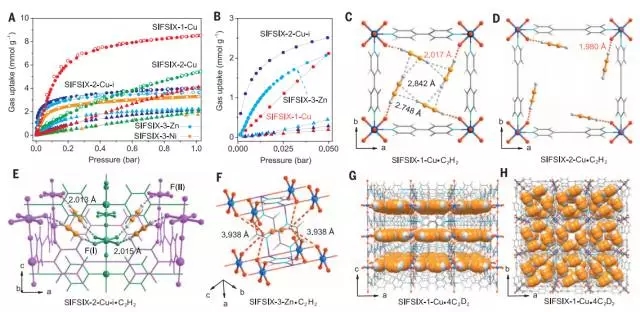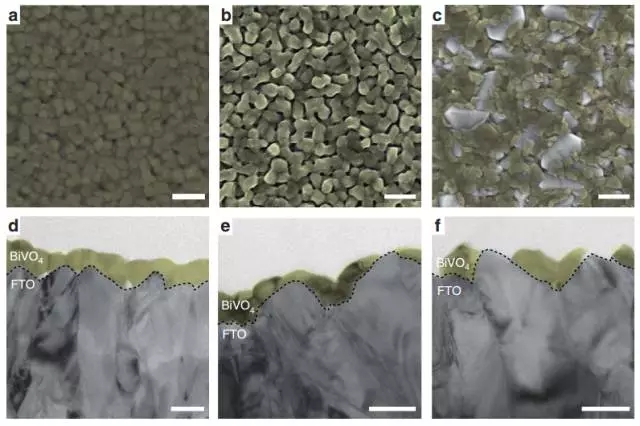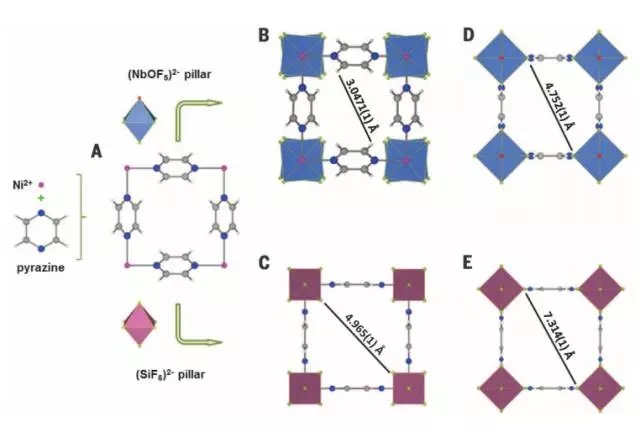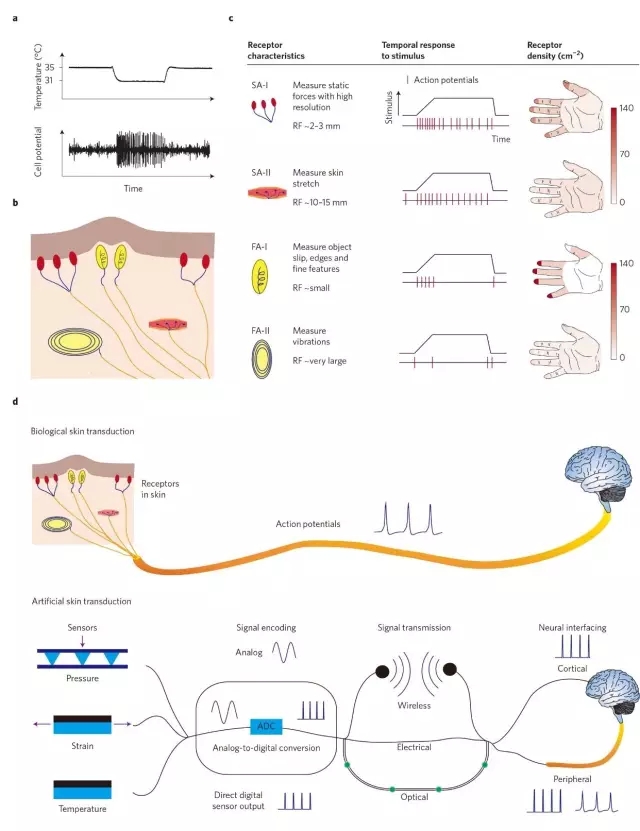Abstract 1. High-efficiency two-dimensional Ruddlesden-Popper type perovskite solar cell (High-efficiencytwo-dimensionalRuddlesden–Poppe...
1. High efficiency two-dimensional Ruddlesden-Popper type perovskite solar cell
(High-efficiencytwo-dimensional Ruddlesden–Popper perovskite solar cells)
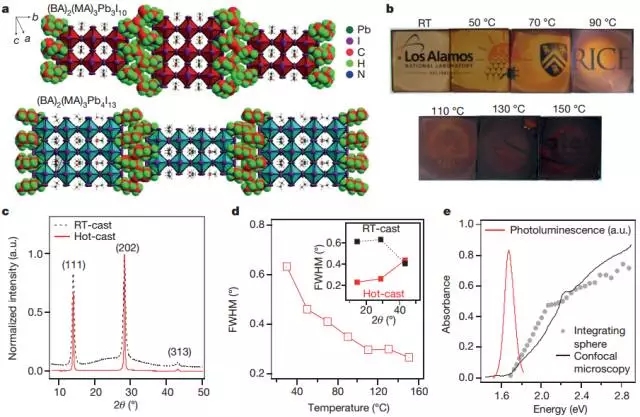
The three-dimensional organic-inorganic perovskite has excellent photoelectric properties and has reached a power conversion efficiency of more than 20%, but its environmental stability and optical stability also need to be greatly improved. In contrast, the Ruddlesden–Popper phase (layered two-dimensional perovskite film) has excellent stability, but the conversion efficiency is only 4.37%. Recently, Tsai and its collaborators at the Alamos National Laboratory in the United States achieved a photoelectric conversion efficiency of up to 12.52% by preparing a layered perovskite near single crystal. Two-dimensional perovskite devices without encapsulation can maintain 60% of their original efficiency over 2,250 hours of operation under constant, standard illumination. After packaging, the device did not exhibit significant performance degradation under standard conditions and in a humid environment. (Nature DOI: 10.1038/ nature 18306)
2. PVP induced anisotropic growth of gold nanoprism
(Polyvinylpyrrolidone-inducedANIsotropic growth of gold nanoprisms in plasmon-driven synthesis)
At present, it is unclear whether the plasma modulation suitable for the growth of silver nanostructures can be used for the synthesis of other precious metals, because the molecular scale controlled growth process is not fully understood. Wei et al. used a plasma modulation to synthesize gold nanoprisms and explained the details of the photochemical synthesis mechanism on a single nanoparticle scale. It was found that the surfactant polyvinylpyrrolidone (PVP) preferentially adsorbed along the periphery of the nanoprism and regulated the anisotropic growth of the gold nanoprism. This finding confers a new function to PVP and is different from the previously recognized PVP as a facet blocking group. (Nature Materials DOI: 10.1038/ NMAT4683)
3. Hybrid porous material effectively separates ethylene acetylene mixture
(Porechemistry and size control in hybrid porous materials for acetylene capturefrom ethylene)
Physical adsorption capacity and selectivity are often two aspects of the need for a porous material to balance. Purification of physical adsorption and efficient gas separation are major obstacles to the application of porous materials in gas adsorption. Cui et al. utilize the metal coordination network and organic linker of hexafluorosilicate to effectively control the chemical nature and size of the pores, and achieve the purpose of preferentially adsorbing acetylene molecules through host-guest and/or guest-guest interactions. Theoretical simulations and neutron diffraction confirmed specific acetylene adsorption sites. The effectiveness of separating the mixture of acetylene and ethylene was also confirmed by experiments. (Science DOI: 10.1126/science. aaf2458)
4. Topological boundary states in high temperature superconductors
(Topologicaledge states in a high-temperature superconductor FeSe/SrTiO3(001) film)
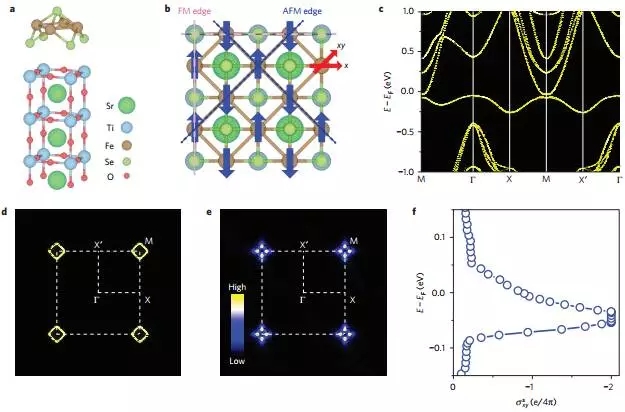
In solid materials, superconducting states and topological states are the two most attractive quantum phenomena. The entanglement of these two states, the topological superconducting state, will produce more novel quantum phenomena. Many materials have been found to be either superconductors or topological insulators. However, few materials have both superconducting and topological states. Liu et al. demonstrated by first-principles, scanning tunneling and angular-resolved light-emission spectroscopy that the recently discovered single-layer FeSe “two-dimensional superconductor†has an M below the Fermi level at an energy band of about 40 keV. Points have a one-dimensional topological boundary state. This is the first two-dimensional material with superconductivity and topological states, providing an opportunity to study two-dimensional topological superconductors through the proximity effect. (Nature Materials DOI:10.1038/NMAT4686)
5. Chemical and photochemical conversion mechanism of bismuth vanadate photoanode
(Mechanisticinsights into chemical and photochemical transformations of bismuth vanadatephotoanodes)
Artificial photosynthesis depends on the practicality of the semiconductor, that is, it is chemically stable and can effectively capture solar energy. Although metal oxide semiconductors have been proven to have resistance to oxidative attack, such materials are not sufficiently stable by chemical and photochemical properties. Francesca et al. proposed a method for evaluating the corrosion mechanism and applied it to a state-of-the-art photoanode such as bismuth vanadate. Computational simulations show that the photoexcited carriers become unstable after the surface is accumulated, and the self-passivation of the chemically stable phase is also suppressed. (Nature Communications DOI: 10.1038/ncomms12012)
6. Interface-driven topological Hall effect
(Interface-driventopological Hall effect in SrRuO3-SrIrO3 bilayer)
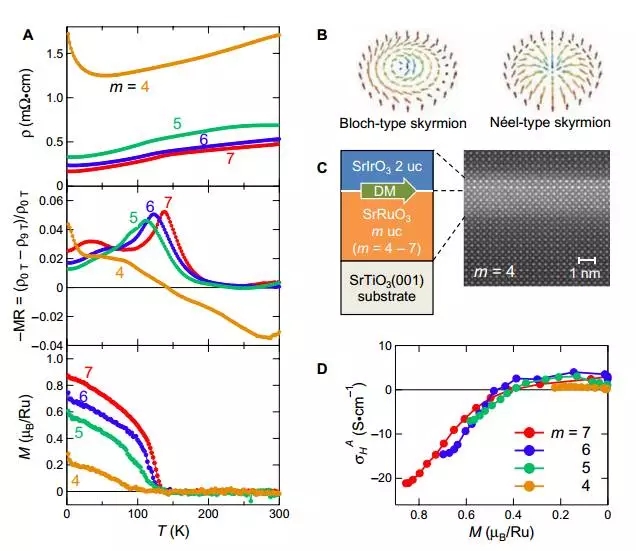
In the past few years, the electron transport of coupled magnetic fields has attracted people's attention. The topological Hall effect is considered to be a powerful tool for detecting Dzyaloshinskii-Moriya (DM) interactions and the resulting magnetic sigmoids. This interaction occurs in the damage inversion symmetry and, therefore, can be artificially introduced into the interface; this view has recently been validated in multilayer metals. However, there have been few attempts to study DM interactions at such interfaces by electron transport. Recently, Jobu et al. demonstrated the correlation between transportability and interfacial DM interaction by fabricating an epitaxial oxide interface. The topological Hall effect is found in epitaxial bilayers composed of ferromagnetic SrRuO3 and paramagnetic SrIrO3 over a wide range of temperatures and magnetic fields. The size of the topological Hall effect decreases rapidly as the thickness of SrRuO3 decreases, indicating that the interface DM interaction plays a significant role. This interaction is expected to achieve a nanoscale magnetic sigmite of 10 nm size. The available results confirm that a high quality oxide interface allows us to adjust for effective DM interactions. This may be an important step towards future topological electronics. (Science Advances DOI: 10.1126/ sciadv. 1600304)
7. MOF-based propylene propane separator
(Ametal-organic framework–based splitter for separatingpropylene from propane)
The olefin/alkane separations that the chemical industry relies on are often accompanied by high energy consumption processes. Cadiau et al. used a chemical method to synthesize a chemically stable metal fluoride organic framework compound (MOF) (NbOFFIVE-1-Ni or KAUST-7). The bridged Ni-pyrazine square layer and the (NbOF5)2-column construct a three-dimensional MOF with a periodic fluoride ion array enclosed within the constricted square channel. (NbOF5) 2 - prevents pyrazine from freely rotating, thereby fixing the overall structure of the pores and reducing the pore diameter to 0.3 nm. This fixed pore structure and size excludes propane, enabling separation of the propane and propylene mixture at atmospheric pressure. (Science DOI: 10.1126/science.aaf6323)
8. Electronic skin
(Pursuingprosthetic electronic skin)
Skin is an important medium for our contact with the world. The re-creation of skin properties using electronics will have a profound impact on surgical prosthetics and medicine. Artificial skin has spurred great interest in material innovation, including mechanical stability and ductility, biodegradability, and the ability to perceive complex diversity over large areas. In order to be able to manufacture skin-like electronic devices with excellent mechanical properties and versatility, and to improve the brain/machine interface so that skin signals can be transmitted to the body, new materials and preparation techniques are being vigorously developed. Professor Bao Zinnan of Stanford University recently published a review of the latest advances in electronic skin in Nature-Materials, including materials and equipment designed to mimic skin perception and the ability to generate biomimetic signals. (Nature Materials DOI:10.1038/NMAT4671)
This article is authorized by the new material online (micro signal: xincailiaozaixian), if other media need to reprint, please contact the new material online small series (micro signal) Others
Self Drilling Screws, Confirmat Screws, Allen Head Self Tapping Screws
Ningbo Brightfast Machinery Industry Trade Co.,Ltd , https://www.brightfastener.com

